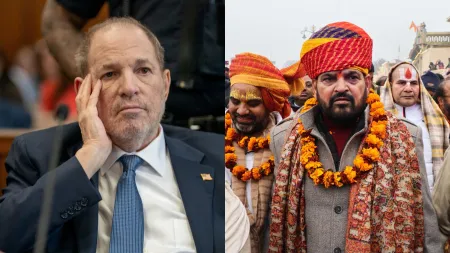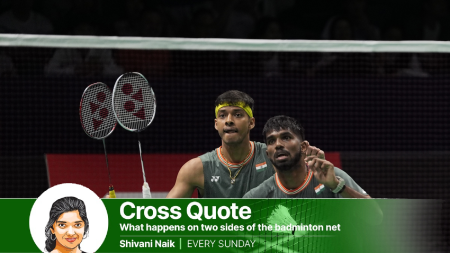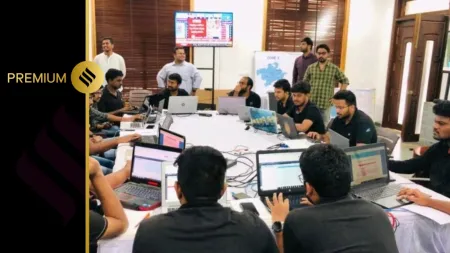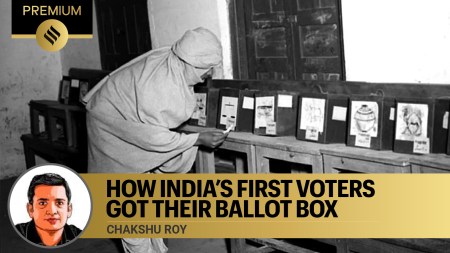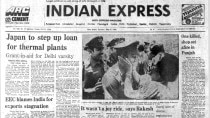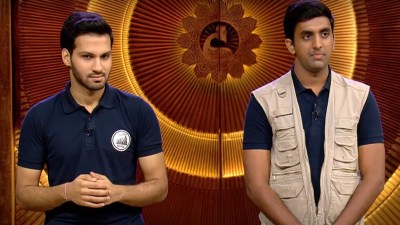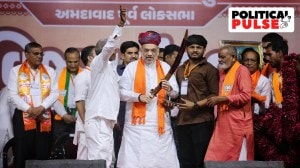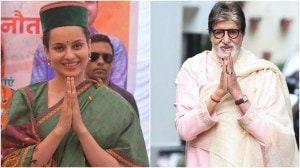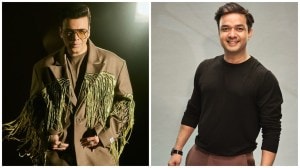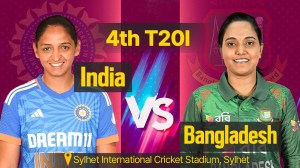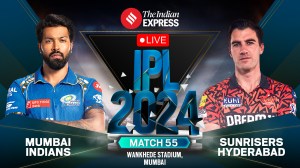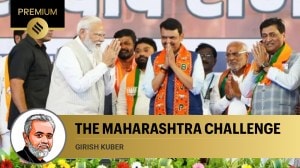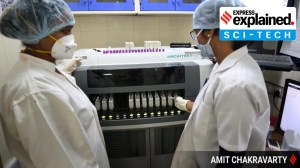- India
- International
So many Shivajis
The 17th century Maratha king has been appropriated by diverse politicians for their gain. But in the hands of different interest groups, he has acquired several personas
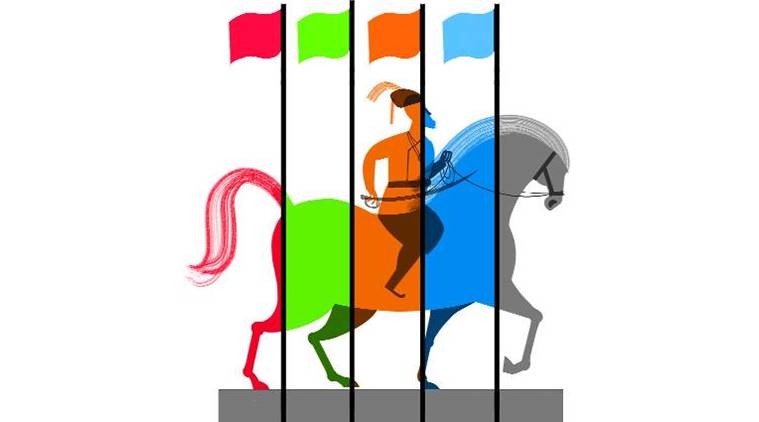 The 17th century Maratha king had many facets. Political parties of all hues, from red to saffron, have selectively picked one to further their agenda. (Illustration by- C R Sasikumar)
The 17th century Maratha king had many facets. Political parties of all hues, from red to saffron, have selectively picked one to further their agenda. (Illustration by- C R Sasikumar)
Prime Minister Narendra Modi performing a bhoomipoojan of the Rs 3,600 crore Chhatrapati Shivaji Maharaj statue, to come up in the Arabian Sea off Mumbai’s coast, was much more than the BJP’s current appropriate-national-heroes spree. The unstated aim behind the exercise could also be to market “Bharatiya” leaders versus those from “India”, such as Jawaharlal Nehru. But the question is, why does everybody these days love Chhatrapati Shivaji?
The 17th century Maratha king had many facets. Political parties of all hues, from red to saffron, have selectively picked one to further their agenda. The Left loves Shivaji’s pro-farmer, pro-poor image whereas the BJP likes to portray him as anti-Muslim. For other political outfits, such as the Shiv Sena and the NCP, Shivaji’s anti-imperial image comes in handy. The history of Shivaji’s politicisation offers a fascinating story.
It begins with Bal Gangadhar Tilak who, in 1895, founded the Shri Shivaji Fund Committee to commemorate Shiv Jayanti. Tilak also undertook a campaign to reconstruct the Shivaji Maharaj Samadhi at Raigad Fort, the place where he was cremated in 1680. Tilak thought reviving Shivaji’s legacy would awaken India’s nationalist spirit and help spur aspirations for freedom. Ironically, it was a British visitor, James Douglas, who had first highlighted the dilapidated state of Shivaji’s samadhi at Raigad. Douglas visited Raigad in 1883 and wrote in his A Book Of Bombay: “No man now cares for Shivajee over all those wide domains which once owned him lord and master. Not one man now contributes a rupee to keep or repair the tomb of the founder of the Maratha Empire.”
Tilak took note of Douglas’s writing and appealed to society through his powerful newspaper Kesari for donations. He started acknowledging donors publicly. It had the desired effect. Tilak was the first leader to understand the importance of eulogising Shivaji for a political cause, obviously as noble as India’s freedom then.
In Shivaji, Tilak saw a rebel with a cause and someone who could have popular appeal. But before Tilak, it was Mahatma Jyotiba Phule who hailed Shivaji as the first shudra-friendly ruler. Mahatma Phule for the first time used the term “Dalit” for shudras. In 1870, he started celebrating Shivaji Jayanti to highlight his pro-Dalit rule. According
to Jyotiba Phule, Shivaji was a “social reformer”; two decades later, Lokmanya Tilak relaunched Shivaji as a political rebel. Both were right.

However, Shivaji was kept away from the political arena after Tilak’s demise though the tradition of Shivaji Jayanti
celebrations was followed. It was only during the Samyukta Maharashtra movement in 1956 that Shivaji re-emerged on the political platform. This time, the Shiv Sena thought of bringing in Shivaji’s legacy to highlight Maharashtra’s plight.
Just the spread of his empire cannot be the barometer to measure the importance of Shivaji — his greatness lies in his thoughts on freedom. He was the first ruler south of the Vindhyas to think of overthrowing the Mughals ruling from Delhi. The Shiv Sena used this aspect of Shivaji’s persona to sell its anti-Delhi rhetoric, aimed at Morarji Desai and others who weren’t willing to accept Maharashtra’s right over Mumbai.
The Samyukta Maharashtra movement had socialists too, fighting for Mumbai along with the Sena. The agitation turned violent after the Congress government, led by Desai, fired at demonstrators in Mumbai’s Flora Fountain, killing 105. Finally Nehru gave in and Mumbai stayed with Maharahtra.
The success of the agitation anointed Chhatrapati Shivaji as someone who challenged Delhi’s rule over Maharashtra.
Post-Babri, the same Shivaji was used to arouse Hindu feelings. Shivaji, the warrior, led successful missions against Shaista Khan, Afzal Khan and many others; this was used to paint him as anti-Muslim — and thus,
pro-Hindu. Like many legends, this is a half-truth. Though it is a fact that Shivaji defeated many Muslim sardars serving the Mughals or Adil Shah, Shivaji’s real fight was with Marathas working for these Muslim kingdoms. But Hindutva forces used selective history to suit their agenda. Besides, the fact that Shivaji had proclaimed himself Go brahman pratipalak (protector of cows and Brahmins) also helped Hindu elements.
Interestingly, this is precisely why the Congress always stopped short of adopting Shivaji. His pro-Hindu image came in the way of Congress’s secular agenda. It was only after 1999 that the party had to change its mindset and accept popular sentiments. In 1999, Congress veteran Sharad Pawar deserted the Congress to set up the NCP. Like the Shiv Sena, Pawar accolades compared him to Shivaji for his act of challenging Delhi’s domination. For the Maratha strongman, there is one more reason to adopt Shivaji as his political mascot. Like many of Pawar’s
associates, Shivaji too was Maratha, the politically strongest group in the state.
With the rise of Devendra Fadnavis and the BJP, and the rapid decline of the likes of Pawar, the Marathas witnessed many fringe elements growing increasingly aggressive in politics. The ongoing Maratha agitation marks the rise of new Marathas. They are opposed to Brahminical depictions of Shivaji and like to portray him as intolerant, which he was not. Currently, this faction is battling with the BJP to claim Shivaji’s legacy.
As things stand today, the BJP seems to have upped the ante by roping in Narendra Modi to launch the monument. Actually, it was the Pawar-led NCP that had announced the plan to raise the Shivaji statue, just ahead of the last assembly elections, thinking the late king may offer electoral help. It didn’t work. Their
invocation of Shivaji was too late for the NCP and Congress, which lost to the BJP, which then waited for the right opportunity to take over the NCP-Congress idea. Interestingly, appropriating Shivaji also helps BJP nullify Maratha anger; less powerful factions and OBC groups amongst the Marathas also revere Shivaji.
Everyone likes to view Shivaji through their own prism, however much the image may get distorted. In this charged political atmosphere, Shivaji is an ideal mascot to attract voters. Indeed, the saying goes, great men die twice; once, when they are dead, the second time, at the hands of their followers. Shivaji has died many deaths.
40 Years Ago
EXPRESS OPINION
More Explained
May 06: Latest News
- 01
- 02
- 03
- 04
- 05





